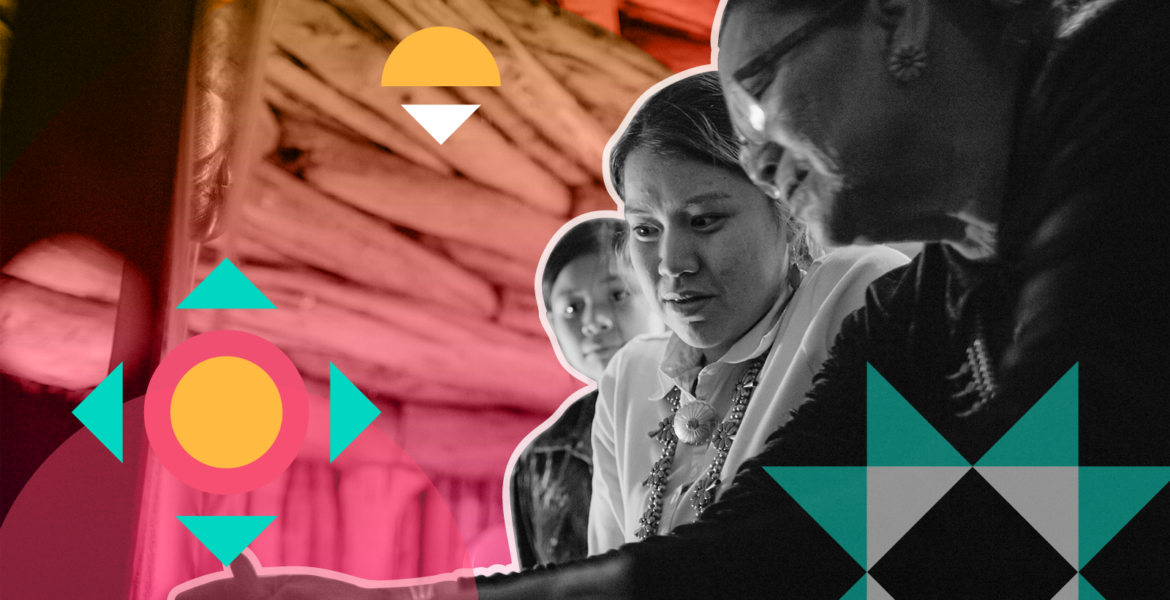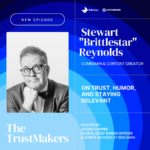Branding has the power to bring communities together, fostering a shared vision for the future. For this to be meaningful in Indigenous communities, designers must lead with empathy, cultural humility, and a commitment to listening to the voices of Tribal Nations.
By Emma Godfrey, Managing Director of design consultancy, Elmwood New York
One of branding’s greatest strengths is its ability to convey an aspirational future. While this is true across all marketing disciplines, brand design has the potential to create deep, lasting impact – especially for communities that have historically been marginalized.
A recent collaboration between Elmwood and Indigenous Pact exemplifies this power. Indigenous Pact, a Native-owned B Corporation, was founded to help transform the health of American Indians and Alaska Natives in one generation. Firm in its belief that health is the starting point for building strong communities, Indigenous Pact works alongside Tribal Nations to support the development of healthcare solutions that are both culturally relevant and community driven.
Through close partnerships with Tribal leaders, Elmwood co-created a brand identity for Indigenous Pact that honors each Nation’s unique traditions while uniting them in a shared mission for health equity.
The Inequity in Tribal Healthcare
Indigenous Pact was co-founded in 2017 by Aimee Brenkus, a descendant of the Oneida Nation of Wisconsin, and her husband, Kurt Brenkus. Aimee serves as Chair of the Board, and Kurt serves as CEO. Their personal experience navigating the complexities of the Tribal healthcare system reinforced the urgent need for Tribal-led solutions that strengthen access, funding, and self-determination.
Native Americans still face a significant life expectancy gap in the US and some of the worst health outcomes across a range of medical conditions. Indigenous Pact is actively addressing these issues through Tribal-specific, accessible solutions, sustainable healthcare funding strategies, and expanded access to care.
Through Indigenous Pact, Aimee and Kurt sought to leverage the collective strength of America’s Tribal Nations to drive change. This mantra was one of the guiding principles for Elmwood’s design on this project. However, Elmwood also had to balance this unifying effect with an equally important need to capture the diversity and individual sovereignty of the Tribal Nations.
Through insights and perspectives from Aimee and other Indigenous leaders, we learned the extent to which the cultural codes and symbols of each tribe are distinct. The Tribal Nations have been fighting for individual sovereignty for hundreds of years, so it was crucial that the identity we created for Indigenous Pact would authentically speak to each Tribal Nation.
Honoring the Tradition of Native Star Quilts
To visualize the diverse Tribal Nations coming together under the mantle of healthcare equity, our designers, Meg Beckum and Elyanna Blaser, leveraged the Indigenous artform of quilt work. The native star quilt is a strong cultural tradition across all Tribes and is a symbol of honor and generosity. As a storytelling device, quilt work perfectly represents the idea of diverse Indigenous Peoples coming together as one.
It was Aimee Brenkus who first directed Elmwood to the native star quilt. Aimee’s roots were also the inspiration for the purple in Indigenous Pact’s logo, which is the color of the Oneida Tribe.
Working with Aimee, Kurt and other Tribal leaders, Elmwood also developed a logo for Indigenous Pact’s new Community Care service, which pairs the organization’s existing consultancy with a robust suite of on-demand medical resources. This logo is made up of a red circle in the center of the purple star, functioning as a visual reminder of an individual at the heart of a caring community.
Cultural Immersion as the Key to Authentic Branding
Elmwood’s close partnership with Tribal leaders was absolutely crucial for making the branding project such a success.
Together, we crafted undeniably authentic messages, deeply meaningful visual symbols, and empowered brand experiences with real utility, culminating in a brand system that would resonate with and support all Indigenous Peoples, regardless of their Tribe.
This spirit of empathy-led imagination and cultural immersion serves as a model for creating brands for Tribal Nations. People are ultimately at the heart of design, and when you’re prepared to listen and work with them, the results can be truly transformative.











